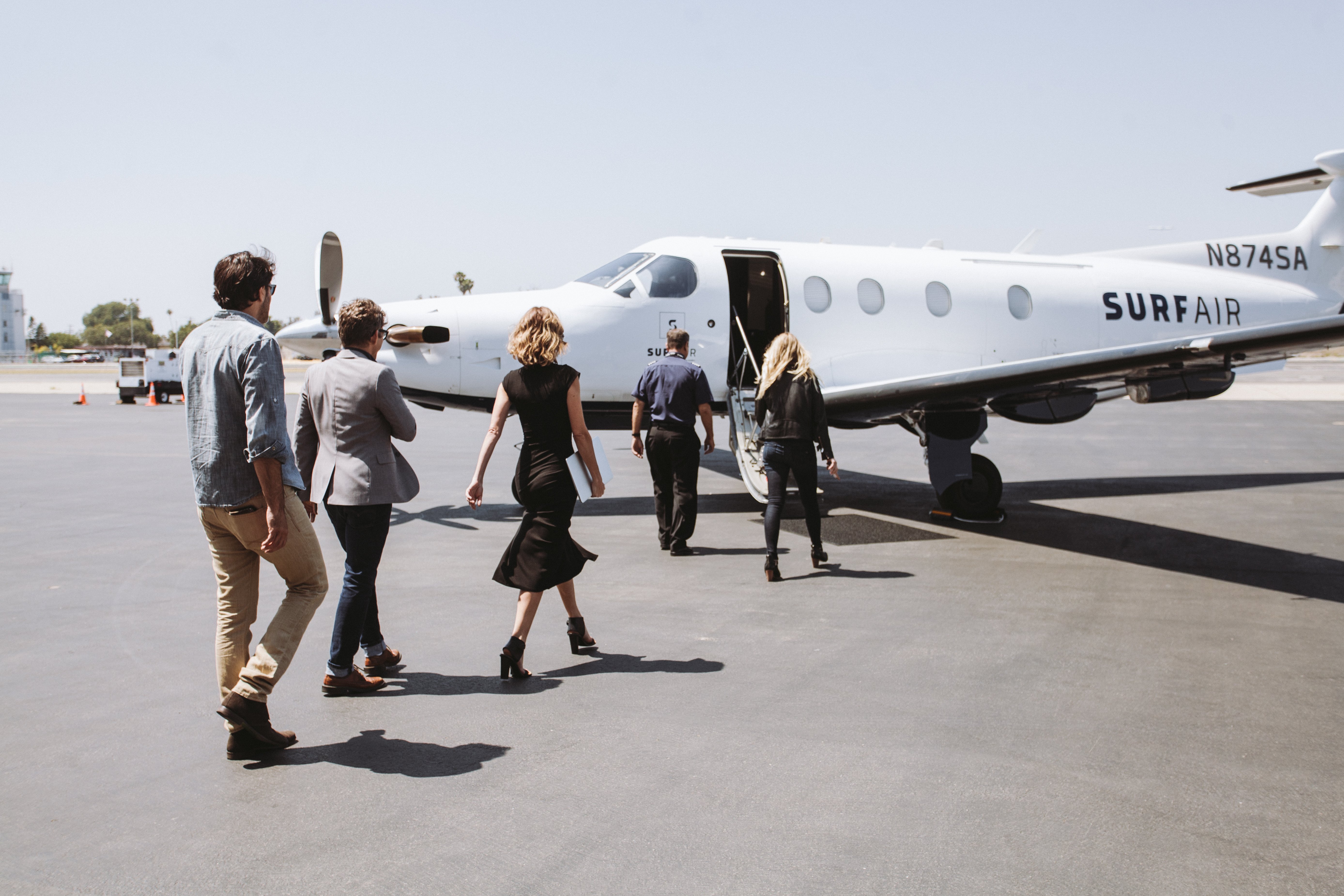Surf Air’s business model is unusual in several ways. First and foremost, it straddles the charter and scheduled regional airline sectors with both a membership-based program for those wanting to plan trips around its predefined network of city pairs and a wide marketplace offering bookings for more than 1,000 aircraft available for on-demand trips
However, this isn’t the only hybrid aspect of the company’s strategy. In 2020, it embarked on a journey toward the electrification of its fleet and a mission to enable many more operators to follow suit.
This led to the founding of its Surf Air Mobility division as the fulcrum for these ambitions, and in February 2021 it agreed to acquire hybrid-electric propulsion pioneer Ampaire to act as the technology enabler for its goals. Then in July, it reached an agreement with Textron Aviation to buy up to 150 of its Cessna Grand Caravan EX single-engine utility turboprop aircraft and replace their Pratt & Whitney PT6 turbine engines with the hybrid-electric powertrain being developed by Ampaire.
“Our north star and core mission is to introduce, accelerate, and bring to scale sustainable propulsion to multiple aircraft,” Surf Air president Fred Reid told FutureFlight. “We have made a conscious decision to begin with hybrid-electric because it's achievable by 2024 and will bring substantial reductions in [carbon dioxide] emissions.”
Based on the scope of Surf Air’s current transportation offering, it is focusing its energies on aircraft with between nine and 19 passenger seats, before, said Reid, “climbing up the aircraft food chain” to larger models. This is what got the Caravan in its sights and led to what it describes as an exclusive partnership with Textron to potentially convert a significant portion of the 2,700-unit installed base of this type.
Earlier this year, Textron established its eAviation electric aviation division but this has yet to announce any specific initiatives regarding new products. The alliance with the more nimble and entrepreneurial Surf Air seems to represent an initial segway for the more conservative public company. However, it is not the only company with eyes on this prize, as electric propulsion developer MagniX is making its own plans to breathe new life into the Caravans.
“We have a multilayered plan with Textron to market these [converted hybrid-electric] aircraft to operators all around the world,” explained Reid. “We are talking to both major airlines and charter operators to seek adoption [of electric propulsion] and fleet orders.”
Reid’s background in air transportation would seem to be an ideal foundation for this mission. Having started his career in the sector with American Airlines, he moved to German flag-carrier Lufthansa and became its first foreign president. He subsequently took the top job at Delta Airlines before launching Virgin America as CEO. Reid also has pedigree in business aviation as a former president of Bombardier’s Flexjet charter group, and in advanced air mobility as the former head of Kitty Hawk’s Cora all-electric eVTOL program (now Wisk Aero).
“We have a lot of respect for the all-electric people, but our focus is on achievability,” said Reid. “Our plans [for the Grand Caravan conversions] involve seeking approval through an STC [supplemental type certificate], and there’s a world of difference between that and a TC [type certificate] required for new aircraft designs.”
Another compelling reason for Surf Air to take the hybrid path is that the aircraft can continue to use existing airports, and do not require extensive investment in infrastructure, such as battery-recharging stations. “But we don’t see hybrid as a stop-gap; it’s here to stay,” said Reid. “Look at the Toyota Prius. That’s been in service for 24 years and still outsells all-electric cars. For roughly the same cost as an engine overhaul, we can help you get a new lease on life for aircraft operating today and with an immediate 30 percent saving in operating costs.”
For Surf Air Mobility, hybrid-electric will breathe new life into legacy aircraft like the Grand Caravan while also awakening the potential for flights between thousands of smaller cities that have no service at all today, not only in North America but potentially in places like Africa, where the alternative is an arduous trek through a jungle or desert.
According to Reid, while the U.S. has around 5,000 airports, 70 percent of scheduled traffic flies in and out of just 30 of these, with thousands more accessible only by private aircraft. “Next year, we hope to open a couple of dozen more routes where there is currently no service and we hope eventually to get [services for] 90 percent of the population within 30 minutes of an airport,” he said. The company also aims to bypass crowded major hubs, as exemplified by existing Surf Air connections between the smaller Los Angeles-area airport of Hawthorne and San Carlos, south of San Francisco.
“We are a technology aggregator,” explained Reid when pressed to define what Surf Air brings to the table. “We’re not going to be building a factory or making components. Our power is in making good use of off-the-shelf or future technology [developed by others]. Our secret sauce is the software [that makes the resulting transportation options available to wider markets].”
Meanwhile, Surf Air’s leadership team is exploring alternative ways to raise further funding, having last year announced its intention to take the group public. Reid said that a lot of interest has come from investors focused on the so-called environmental, social, and governance sector, which encompasses sustainability. “Among that group airplanes are now like what restaurants are to movie stars,” he quipped.
